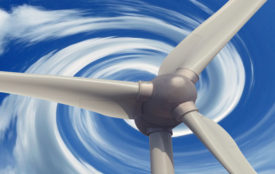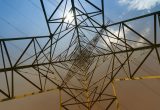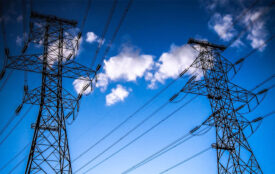Simulation brings global 100% renewable electricity system alive for the first time
A new model developed by Lappeenranta University of Technology (LUT) shows how an electricity system mainly based on solar and wind works in all regions of the world. It shows the functioning of an electricity system that fulfils the targets set by the Paris agreement by using only renewable energy sources.
The global Internet of Energy Model visualizes a 100 percent renewable energy system (100%RE) for the electricity sector for 2030. It can do this for the entire world which, in the model, has been structured into 145 regions, which are all visualised, and aggregated to 9 major world regions.
“With the simulation, anyone can explore what a renewable electricity system would look like. This is the first time scientists have been able to do this on a global scale.” says Christian Breyer, LUT Solar Economy Professor and a leading scientist behind the model.
The model is designed to find the most economical solution for a renewable electricity system. The model shows how the supply of electricity can be organised to cover the electricity demand for all hours of the year. This means that best mix of renewable energy generation, storage and transmission components can be found to cover the electricity demand, leading to total electricity cost roughly between 55 and 70 euros per megawatt-hour for all 9 major regions in the world.
But the story does not end here. The researchers have ambitious goals to develop the model further. Future upgrades will go from looking only at the electricity sector to showing the full energy sector, including heat and mobility sectors. The model will also describe how to transition from the current energy system towards a fully sustainable one.
According to the researchers the model debunks myths about what renewables can and cannot achieve. One of the myths is that a fully renewable energy system cannot possibly run stable for all hours of the year, due to the intermittent character of solar and wind energy. Another myth is the idea that without large base load generation capacities, such as coal or nuclear plants, an electricity system cannot work. According to the researchers, both of these are incorrect and the facts can be checked from the model.
“My hope is that we can finally stop debating about these myths. The visualisation shows exactly how a fully renewable electricity system operates. So let’s just build it,” emphasizes Pasi Vainikka, Principal Scientist from VTT Technical Research Centre of Finland Ltd.
Transparency of the data and research is very important for the researchers. Anyone can download the result data for further inspection. The publications based on the data are available online.
“We want the model to give every citizen the chance to familiarise themselves with a renewable energy system. Increased knowledge usually lowers the resistance towards new developments,” says Vainikka.
Researchers hope that this can facilitate fact-based discourse on global energy transition.
“Every country in the world has to find pathways to achieve the Paris agreement targets and to avoid stranded assets. This model can provide the help for policy-makers, industrial decision-makers and societal stakeholders to do that,” emphasizes Breyer.
Professor Breyer will present the simulation for the first time on Friday the 4th at the World Clean Energy Conference (WCEC) hosted by the United Nations in Geneva.
The model was done as part of the Neo-Carbon Energy research, which is funded by the Finnish Funding Agency for Innovation, Tekes, and is carried out collaboratively by Lappeenranta University of Technology (LUT), VTT Technical Research Centre of Finland Ltd and University of Turku, Finland Futures Research Centre.
Simulation: http://neocarbonenergy.fi/internetofenergy/







